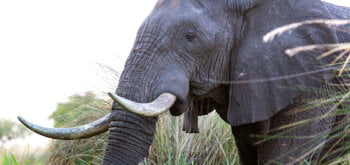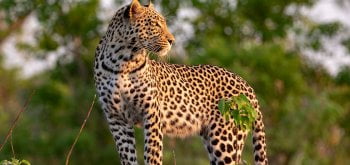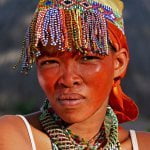
Botswana safari in Luxury
1st Day - Victoria Falls, Zimbabwe Upon your arrival at Windhoek International Airport, collected your luggage and complete the entry formalities, ...
More info »
1st Day - Victoria Falls, Zimbabwe Upon your arrival at Windhoek International Airport, collected your luggage and complete the entry formalities, ...
More info »
1st Day - Victoria Falls, Zimbabwe Upon your arrival at Victoria falls International Airport, collected your luggage and complete the entry ...
More info » Botswana is known for the Okavango Delta, which flows into the thirsty sand off the Kalahari Desert. Without ever reaching the sea, it is the second largest inner delta of the world. Botswana has always strived to maintain and preserve its natural habitat and as of 2014 the Delta of the Okavango has been declared part of the UNESCO World Heritage. Its unique setting, national parks and reserves represent one of the most complete ecosystems in the world and the quality of wildlife present here is unique, contributes to making Botswana a destination for many lovers of African Nature and photographers alike.
Botswana is known for the Okavango Delta, which flows into the thirsty sand off the Kalahari Desert. Without ever reaching the sea, it is the second largest inner delta of the world. Botswana has always strived to maintain and preserve its natural habitat and as of 2014 the Delta of the Okavango has been declared part of the UNESCO World Heritage. Its unique setting, national parks and reserves represent one of the most complete ecosystems in the world and the quality of wildlife present here is unique, contributes to making Botswana a destination for many lovers of African Nature and photographers alike.
Our tours in Botswana offer a variety of itineraries, diverse activities, along with a wide range of accommodations in order to meet all your needs and goals. Accommodations are arranged in hotels, lodges, fixed and/or mobile tented camps and in classic camping sites. With our safaris you will discover the natural beauty in search for of wildlife on board of 4×4 off-road vehicles.
The mobile tented camp tours are mostly safaris with open 4×4 off-road transfers, overnights in canvas tents (3×3 mt) with camp beds (pillows and sheets included) and adjoining toilets and showers with hot water. The tents are set-up by the organisation in a private areas, which allows you to experience a privileged view of this uncontaminated nature. Dinners are served on fully set tables, with comfortable chairs and all else that is necessary for a relaxing evening by the camp fire.
The Delta of the Okavango and the Moremi Game Reserve
The Okavango River forms the second largest inner delta of the world, right after Niger’s inner delta, and its waters end in the sands of the Kalahari Desert. The Delta of the Okavango has been declared part of the UNESCO World Heritage in 2014. The delta has an ecosystem that brings life to a vast and relevant bio-diverse fauna and flora. Its waters run smoothly through the savannah, channels forming lagoons covered with water-lilies, groves of reeds, and papyrus. The islands create an oasis of vegetation where many animal species find refuge. The delta extends and then reduces itself following the rainy season’s pace. The delta is home to a large population of mammals such as elephants, hippos, kudus, zebras, giraffes, impala, lions, leopards wilds dogs and hyenas. To fully appreciate this natural wonder we suggest to go into the heart of the Delta and navigate the channels with a mokoro a traditional canoe.
The Moremi Game Reserve is a peninsula which is part of the Okavango Delta in the eastern part that includes Chief’s Island, which can be reached only by plane or boat. It is considered one of the most beautiful natural reserves of Africa and is very rich with wildlife.
The spectacular Delta of Okavango and the Moremi Reserve have no fencing allowing free animal movement. The area has many lagoons, perennial and seasonal water channels. The vegetation varies from mopane and acacia savannahs, rich riverine vegetation and open grass land.
The Moremi Reserve is inhabited by large mammals such as families of elephants, hippos, buffalos, zebras, giraffes, kudu, lechwe, tsessebe, water antelopes and predators such as lions, leopards, hyenas, the African wild dog, cheetahs and many birds. Storks, herons, wading birds, eagles and ground hornbills and many more.
Chobe National Park
Chobe National Park is divided in different areas.
The Savuti is a sandy area which takes its name from the channel that ends in the vast Savuti marsh. The Savuti channel last drying event was in 1979, leaving the Savuti area completely dry. The thirsty animals converged to the few water holes in the area. As of 2009, the Savuti river was flowing again and new life had begun along its banks; with elephant families where back with their babies, buffalo herds run through the vast marsh, zebras, giraffes, impala, greater kudus and lions, leopards, hyenas, wild dogs…Savuti is a real heaven for wild life.
Chobe River Front is the most visited area. The Chobe River forms vast alluvional plains, which during the dry season its very rich in grazing and attracting many animals. Along its banks the rich vegetation offers further habitat to wildlife and a variety birds. Chobe River Front is rich with large heard of elephant, buffalos, hippos, crocodiles, lions, antelopes, wild dogs, impala, zebras, giraffes, leopards, hyenas, sable antelope and many other. The park is rich in birds life, such as a variety of aquatic birds, eagles, bee-eater, owls, vultures, herons and many others.
Kalahari Desert
Made famous by researchers Mark and Delia Owens with their book “Cry of the Kalahari”; they lived for 8 years in Deception Valley, studying the lions of the Central Kalahari Game Reserve.
The Kalahari Desert is the fourth largest desert in the world. Its territory comprises endless sandy planes and old dried-up lakes called “Pan” by the locals. By handing down the secrets of the desert and their age-old knowledge of nature, the San people were able to survive in a hostile territory such as the Kalahari Desert.
Areas that you’ll want to visit in the Kalahari Desert are Makgadikgadi National Park, Nxai Pan National Park, and Central Kalahari Game Reserve which extends to 52.800 square kms.
GENERAL INFORMATION